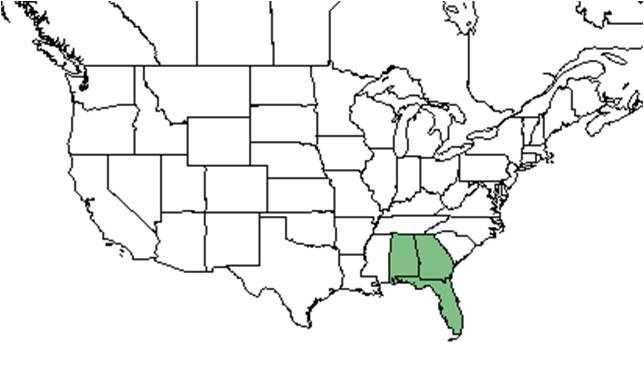Difference between revisions of "Liatris chapmanii"
KatieMccoy (talk | contribs) (→References and notes) |
KatieMccoy (talk | contribs) (→Taxonomic notes) |
||
| Line 20: | Line 20: | ||
Common name: Chapman's blazing star | Common name: Chapman's blazing star | ||
==Taxonomic notes== | ==Taxonomic notes== | ||
| + | Named for A.W. Chapman, one of the southeast's best known early botanists <ref name="hawthorn">[[http://hawthornhillwildflowers.blogspot.com/2009/12/chapmans-blazing-star-liatris-chapmanii.html]]Native Florida Wildflowers Accessed: January 11, 2016</ref>. | ||
| + | |||
==Description== | ==Description== | ||
<!-- Basic life history facts such as annual/perrenial, monoecious/dioecious, root morphology, seed type, etc. --> | <!-- Basic life history facts such as annual/perrenial, monoecious/dioecious, root morphology, seed type, etc. --> | ||
Revision as of 14:11, 13 January 2016
| Liatris chapmanii | |
|---|---|
Error creating thumbnail: Unable to save thumbnail to destination
| |
| Scientific classification | |
| Kingdom: | Plantae |
| Division: | Magnoliophyta - Flowering plants |
| Class: | Magnoliopsida – Dicotyledons |
| Order: | Asterales |
| Family: | Asteraceae ⁄ Compositae |
| Genus: | Liatris |
| Species: | L. chapmanii |
| Binomial name | |
| Liatris chapmanii Torr. & A. Gray | |

| |
| Natural range of Liatris chapmanii from USDA NRCS Plants Database. | |
Common name: Chapman's blazing star
Contents
Taxonomic notes
Named for A.W. Chapman, one of the southeast's best known early botanists [1].
Description
A description of Liatris chapmanii is provided in The Flora of North America.
Distribution
Ecology
Habitat
In the Coastal Plain in Florida, L. chapmanii can occur in longleaf pine sandhills and pine-oak-palmetto scrubs (FSU Herbarium). It has been found in disturbed areas such as bulldozed pinelands and sandy fields. Soil types include loamy sand and red clay (FSU Herbarium). Associated species include Quercus laevis, Ceratiola, Chrysopsis, Liatris gracilis, L. tenuifolia, Carphephorus odoratissimus, Balduina, Sporobolus, Lyonia, Myrica, Serenoa, Agalinis, and Dicerandra (FSU Herbarium).
Phenology
Flowers August through October (FSU Herbarium).
Seed dispersal
Seed bank and germination
Fire ecology
Pollination
The following Hymenoptera families and species were observed visiting flowers of Liatris chapmanii at Archbold Biological Station (Deyrup 2015):
Megachilidae: Megachile albitarsis
Use by animals
Diseases and parasites
Conservation and Management
Cultivation and restoration
Photo Gallery
References and notes
Deyrup, M.A. and N.D. 2015. Database of observations of Hymenoptera visitations to flowers of plants on Archbold Biological Station, Florida, USA.
Florida State University Robert K. Godfrey Herbarium database. URL: http://herbarium.bio.fsu.edu. Last accessed: October 2015. Collectors: Loran C. Anderson, B. Boothe, M. Boothe, Edwin L. Bridges, A.F. Clewell, George R. Cooley, Robert Doren, R.J. Eaton, Grayal Farr, Robert K. Godfrey, Norlan, R.A. Norris, C. Henderson, R. Kral, Olga Lakela, John Lazor, Robert L. Lazor, K. MacClendon, Travis MacClendon, Sidney McDaniel, J.B. McFarlin, Thomas Miller, Steve L. Orzell, Paul L. Redfearn Jr., Cecil R. Slaughter. States and Counties: Florida: Bay, Calhoun, Collier, Escambia, Franklin, Gadsden, Gulf, Highlands, Hillsborough, Indian River, Jackson, Leon, Liberty, Martin, Pinellas, Polk, Wakulla, Washington. Compiled by Tall Timbers Research Station and Land Conservancy.